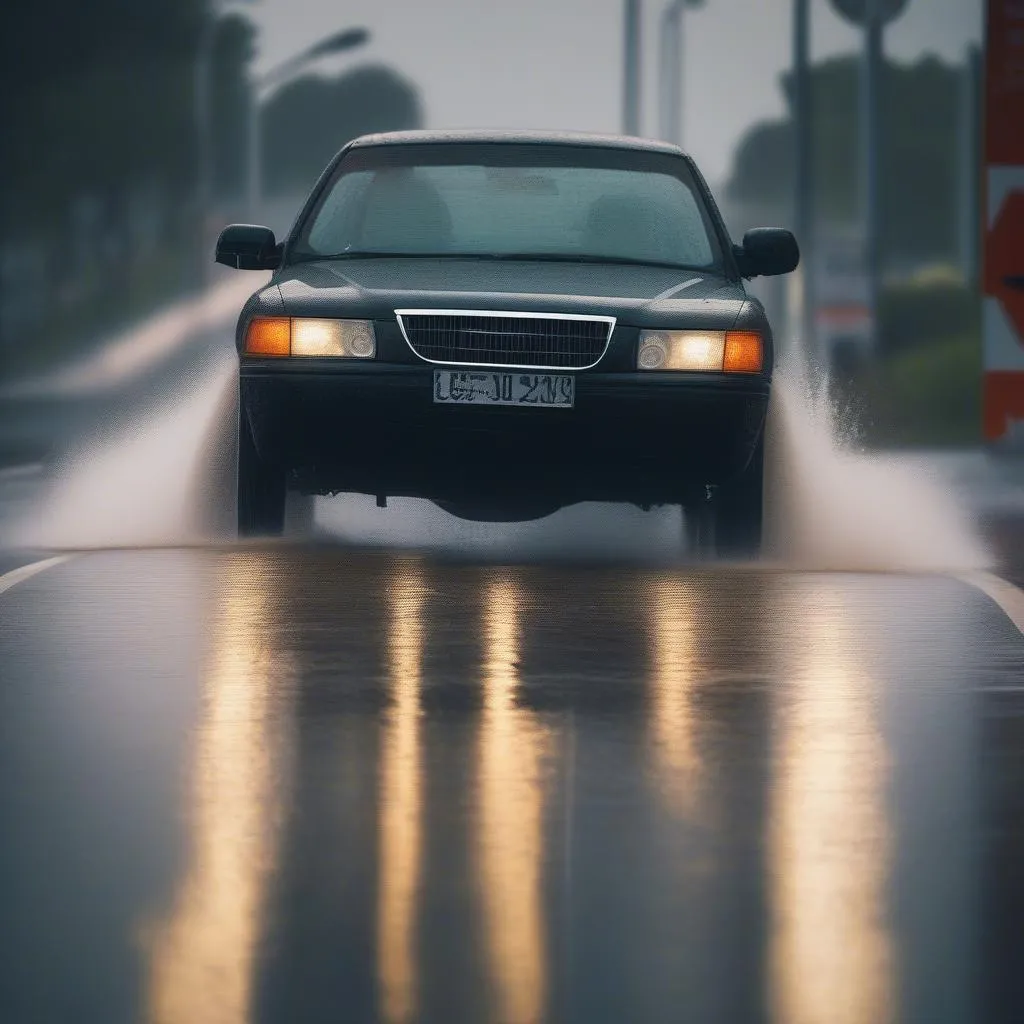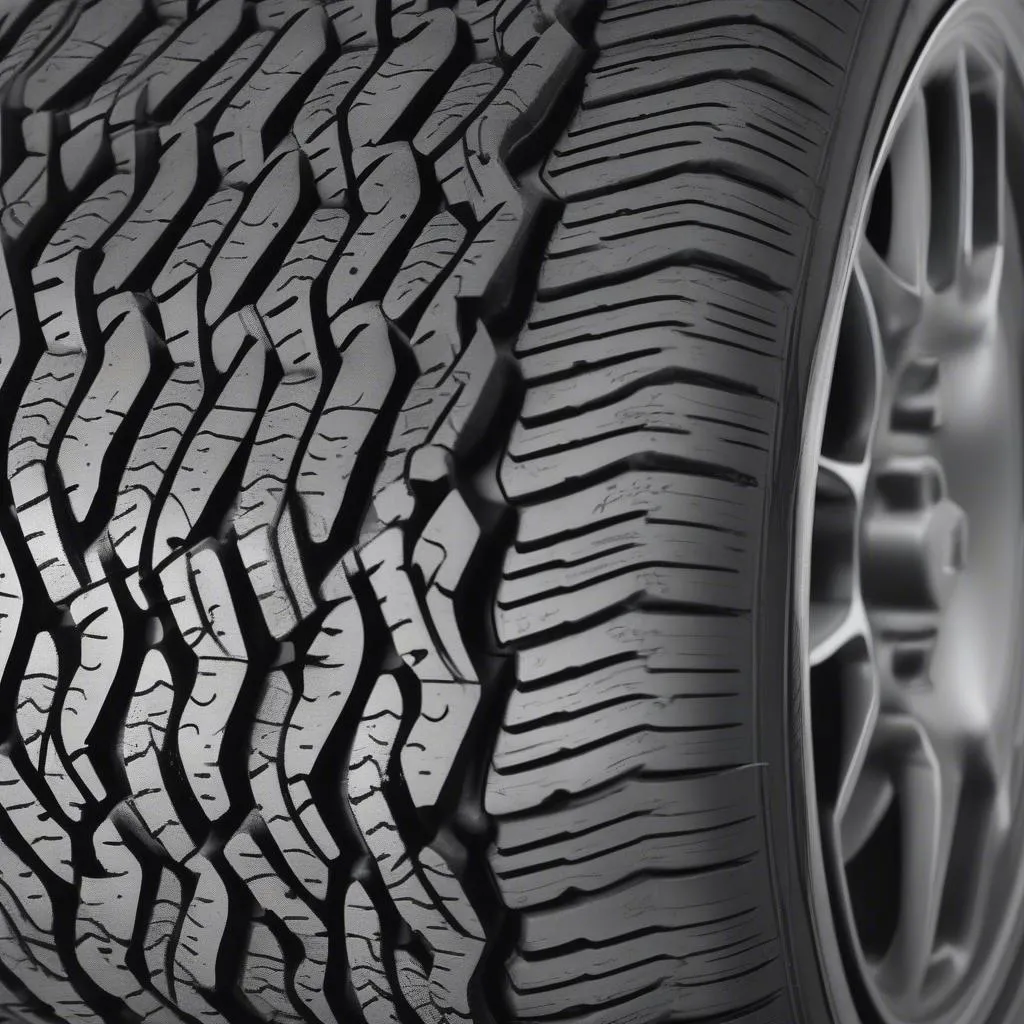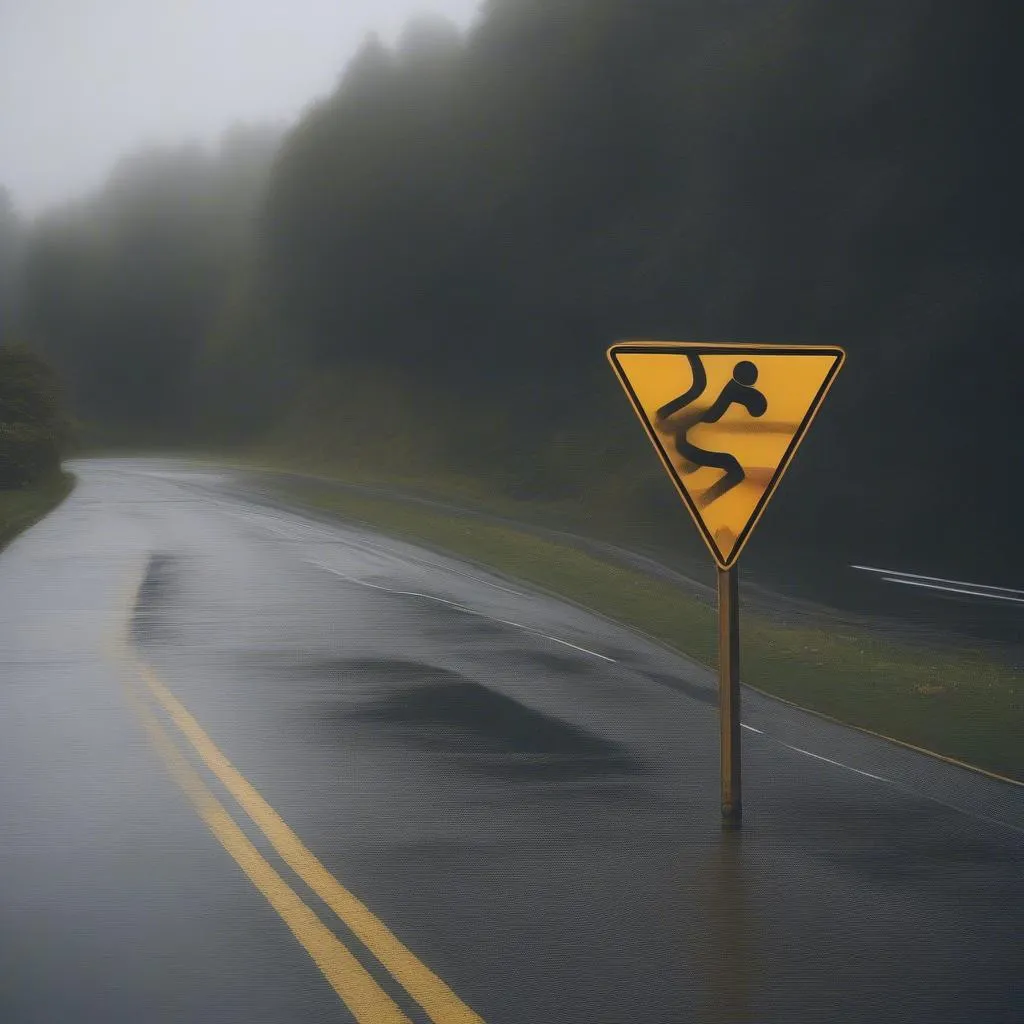Have you ever been driving down the road and suddenly felt your car lose control? Maybe you were on a wet road and your car started to skid. You might have even heard the dreaded “hydroplaning” term thrown around. But what exactly is hydroplaning, and how can you avoid it?
Hydroplaning Car Crash: Understanding The Risks
Hydroplaning is a dangerous condition that can happen when your car tires lose contact with the road surface due to a layer of water between the tire and the road. This can happen on wet roads, especially during heavy rain or when there are puddles.
How Does Hydroplaning Occur?
Imagine driving on a wet road. The water on the road creates a thin layer between your car’s tires and the asphalt. When your car tires move fast enough, they can push water out of the way and maintain traction. However, if the water is too deep or your speed is too high, the tires can’t displace the water quickly enough, causing them to lose traction. This is hydroplaning.
Hydroplaning Car Crash: The Dangers
Hydroplaning can be extremely dangerous, as your car will essentially become uncontrollable. You can lose steering and braking control, leading to a crash. It’s important to understand the factors that contribute to hydroplaning and how you can avoid it.
Key Factors Contributing to Hydroplaning
Speed
Higher speeds increase the chances of hydroplaning. At higher speeds, your tires simply can’t push the water out of the way fast enough, causing them to lose traction.
Tire Condition
The condition of your tires can also play a role. Worn tires with less tread depth have less surface area to grip the road and are more likely to hydroplane. Tires with good tread depth can channel water away from the tire, making it less likely to hydroplane.
Road Conditions
As we mentioned earlier, wet roads are the biggest culprit. Puddles and standing water are especially dangerous. However, roads that are heavily grooved or have a lot of debris can also contribute to hydroplaning.
Hydroplaning Car Crash: What Happens During a Hydroplaning Incident?
When hydroplaning occurs, you may experience a number of things:
- Loss of Steering Control: This is the most common and dangerous aspect of hydroplaning. Your car will suddenly feel loose and unresponsive to steering input.
- Loss of Braking Control: You may notice that your brakes aren’t working as effectively, or not at all.
- A Slippery Feeling: You’ll likely notice your car feeling like it’s “floating” or “skimming” across the road.
Hydroplaning Car Crash: What To Do?
If you find yourself hydroplaning, here’s what to do:
- Don’t Panic: It’s important to stay calm and avoid making any sudden movements.
- Ease off the Gas: Don’t slam on the brakes. Gradually take your foot off the gas pedal to slow down.
- Keep the Steering Wheel Straight: Hold the steering wheel firmly and don’t jerk or overcorrect.
- Let the Car Slow Down Naturally: Allow the car to slow down naturally. Avoid braking unless absolutely necessary.
- Gently Steer When You Can: Once you regain traction, you can gently steer the car in the direction you want to go.
- Be Aware of Other Vehicles: Watch for other cars on the road and be prepared to take evasive action if necessary.
Hydroplaning Car Crash: Preventing Hydroplaning
Here are some things you can do to avoid hydroplaning:
- Reduce Speed: Reduce your speed on wet roads, especially during heavy rain.
- Check Your Tires: Make sure your tires have good tread depth. The minimum recommended tread depth in most states is 2/32 inch.
- Maintain Your Tires: Rotate your tires regularly and check your tire pressure. Under-inflated tires can increase the risk of hydroplaning.
- Avoid Puddles: If possible, avoid driving through large puddles or areas of standing water.
- Use Caution on Grooved Roads: Be extra cautious on roads with deep grooves or a lot of debris.
Hydroplaning Car Crash: Frequently Asked Questions
What happens when a car hydroplanes?
When a car hydroplanes, the tires lose contact with the road surface because a layer of water is between the tire and the road. This can cause the car to skid uncontrollably.
What are the symptoms of hydroplaning?
The most common symptoms of hydroplaning include:
- Loss of steering control: The car becomes unresponsive to steering input.
- Loss of braking control: The brakes become less effective, or even ineffective, in slowing the car down.
- A slippery feeling: The car may feel like it is “floating” or “skimming” across the road surface.
What should I do if my car starts to hydroplane?
If your car starts to hydroplane, try to:
- Ease off the gas: Avoid slamming on the brakes, as this can worsen the situation.
- Keep the steering wheel straight: Don’t jerk or overcorrect the steering wheel.
- Let the car slow down naturally: Avoid braking unless absolutely necessary.
- Gently steer when you can: Once you regain traction, you can gently steer the car in the direction you want to go.
How can I prevent hydroplaning?
You can help prevent hydroplaning by:
- Reducing your speed: Slow down on wet roads.
- Checking your tires: Make sure your tires have adequate tread depth and are properly inflated.
- Avoiding puddles: Drive around large puddles and standing water.
- Being cautious on grooved roads: Use extra caution on roads with deep grooves or a lot of debris.
Hydroplaning Car Crash: Additional Resources
- National Highway Traffic Safety Administration (NHTSA): https://www.nhtsa.gov/
- AAA: https://www.aaa.com/
Hydroplaning Car Crash: Conclusion
Hydroplaning can be a dangerous situation, but you can reduce the risk by following these tips. Be prepared for wet road conditions, slow down, and drive cautiously. If you ever find yourself hydroplaning, remember to stay calm, ease off the gas, and try to regain control of your vehicle. Remember, safety is always the top priority!
 car hydroplaning
car hydroplaning
 tire tread depth
tire tread depth
 wet road caution
wet road caution
If you have any questions about hydroplaning, car maintenance, or need help with diagnostics tools, feel free to reach out to us on Whatsapp: +84767531508. We’re here to help!